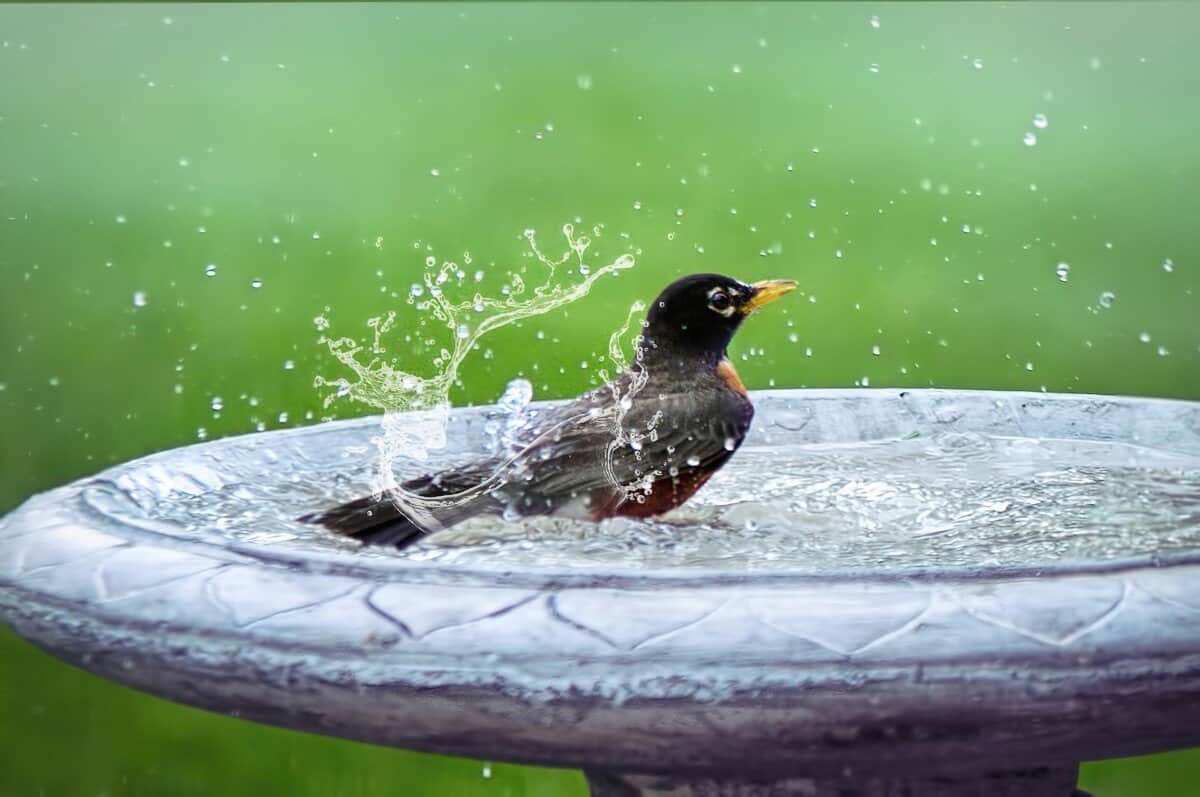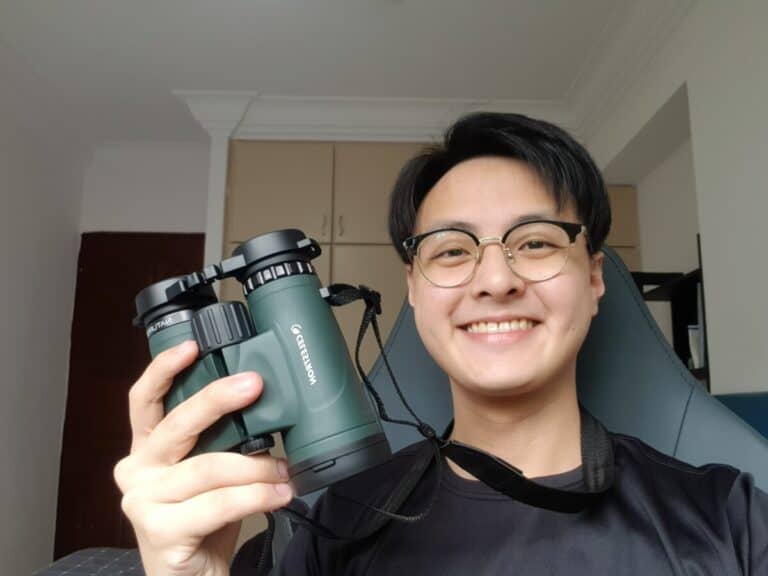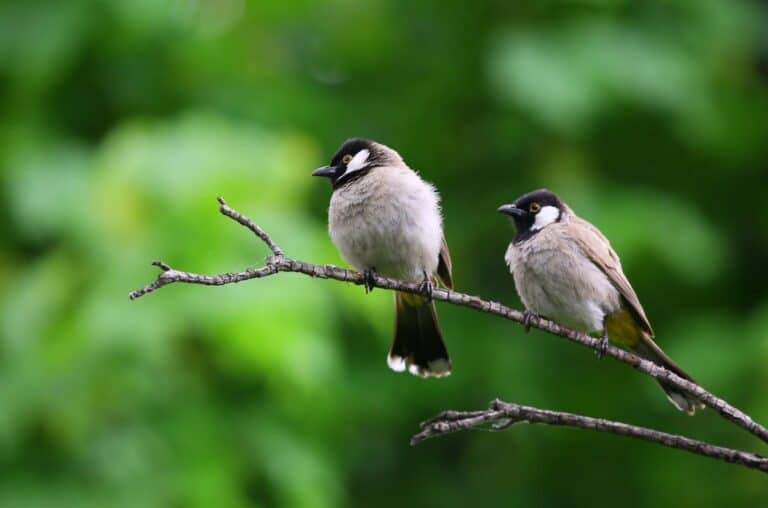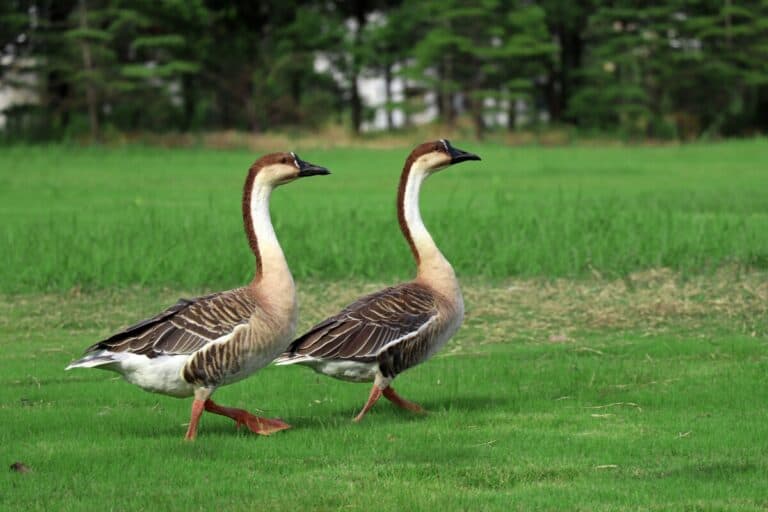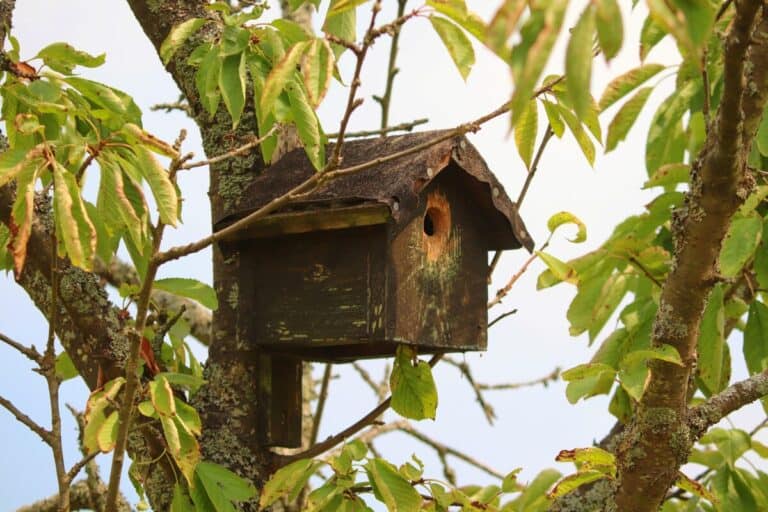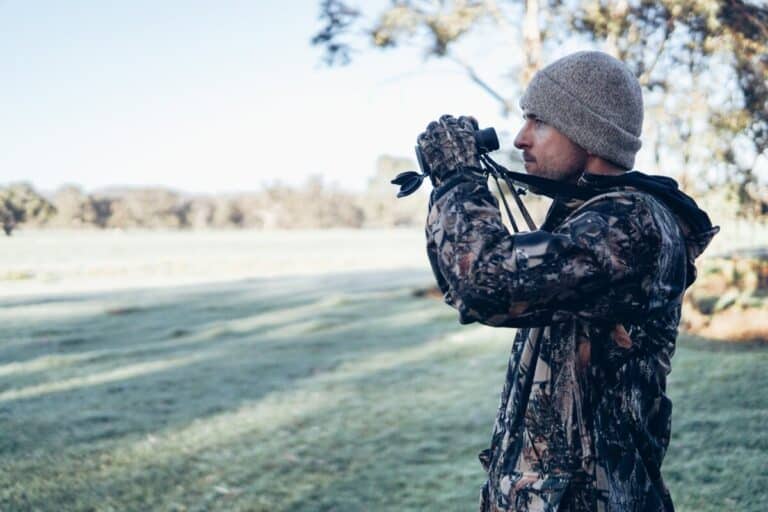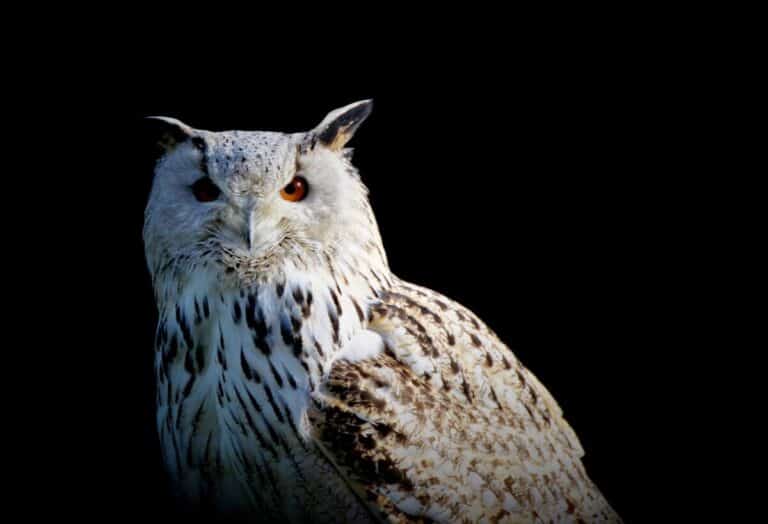Water Level Depth For Bird Baths: Guidelines and tips!
We’re reader-supported; we may earn a commission from links in this article.
Birds love bird baths because they provide a clean source of water for them to clean themselves with. With many different types of bird baths out there, I thought to myself, “What is the ideal depth of water in a bird bath?” So I did some extensive research online. Here’s what I found:
The ideal depth of water in a birdbath is about 1 to 2 inches deep. The water level on the edges should be about 1 inch deep and with a maximum of 2 inches deep in the middle. The birdbath water level should not exceed half the height of birds. Rocks or shallow dishes can be added to reach the ideal water level depth.
Bird bath water levels are very important when setting up a bird bath, especially for those of you who are setting up for the first time. If you’ll stick around, I’ll describe more the reasoning behind these water levels.
Role of Bird Baths
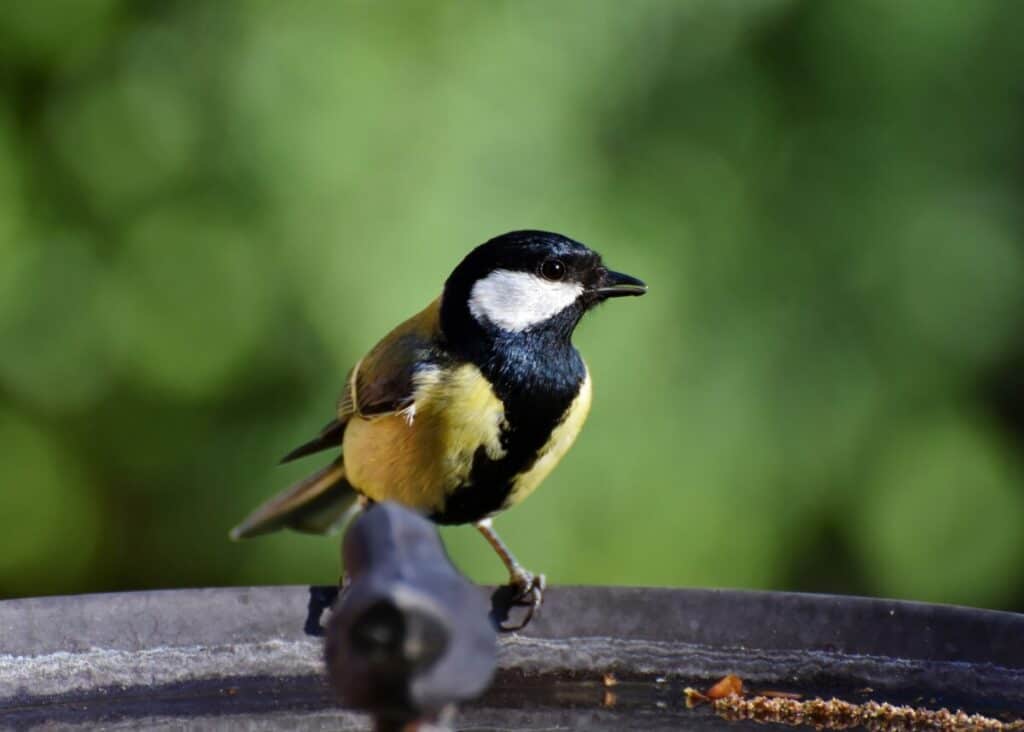
Traditionally, birds take baths to maintain the condition of their feathers in small streams and freshwater springs. The birdbaths in today’s modern context are man’s inventions to get birds to visit their backyard.
Although the function of bird-bathing isn’t too clear now, we know that birds do enjoy it on a hot summery day.
Therefore, it is important that we get the water level depth right so that birds can fully enjoy their bath with safety issues, and most importantly without you constantly having to manage it.
Why The Depth of The Bird Bath Is Important
Bird baths are amazing because they allow birds to come visit your backyard without any need for bird feed. However, the depth of the water level of the bird bath is crucial and can determine whether birds will visit the bath or not.
Birds come in different sizes, heights, and even different leg lengths. These all must come into play when looking at the ideal depth for a bird bath. Let’s look at a number of birds which are most likely to appear in your backyard (if you live in the US):
| s/n | Common Backyard Bird | Length of Bird |
| 1. | Northern Cardinal | 7 to 9 inches |
| 2. | Blue Jay | 9 to 12 inches |
| 3. | American Robin | About 10 inches |
| 4. | Mourning Dove | About 10.5 inches |
| 5. | American Crow | About 17.5 inches |
| 6. | Dark-Eyed Junco | 5.3 to 6 inches |
| 7. | Black-capped Chickadee | 4 to 6 inches |
| 8. | White-breasted Nuthatch | About 5 inches |
| 9. | Tufted Titmouse | 4.5 to 5.5 inches |
| 10. | House Sparrow | About 6.3 inches |
| 11. | American Goldfinch | About 4.3 inches |
| 12. | Downy Woodpecker | About 5.75 |
| 13. | Hairy Woodpecker | 9 to 13 inches |
| 14. | Red-bellied Woodpecker | About 8.5 inches |
Judging from the lengths of the 14 most common backyard birds in the US, we can tell that the average bird that will visit your bird bath will be relatively short in stature and cannot take a bird bath that is too deep.
If a bird approaches a bird bath and judges that the bird bath is too deep, the bird may not even attempt to enter the bath at all. Therefore it is crucial that you stick by the optimal depth of the bird bath to be 1 – 2 inches.
Birdbath water levels should be about 1 to 2 inches deep. The edges should be about 1 inch, sloping down to a maximum of 2 inches deep in the middle. The water level should not exceed half the height of birds using the birdbath. Rocks or shallow dishes can be added to make the water level shallower.
It is important that you get the depth right because you do NOT want birds to slip into water that is too deep for them to handle, and end up drowning inside. That will be a major disaster and I’m sure we wouldn’t want it to happen to us, ever.
How You Can Adjust Water Depth Without Purchasing A New Bird Bath
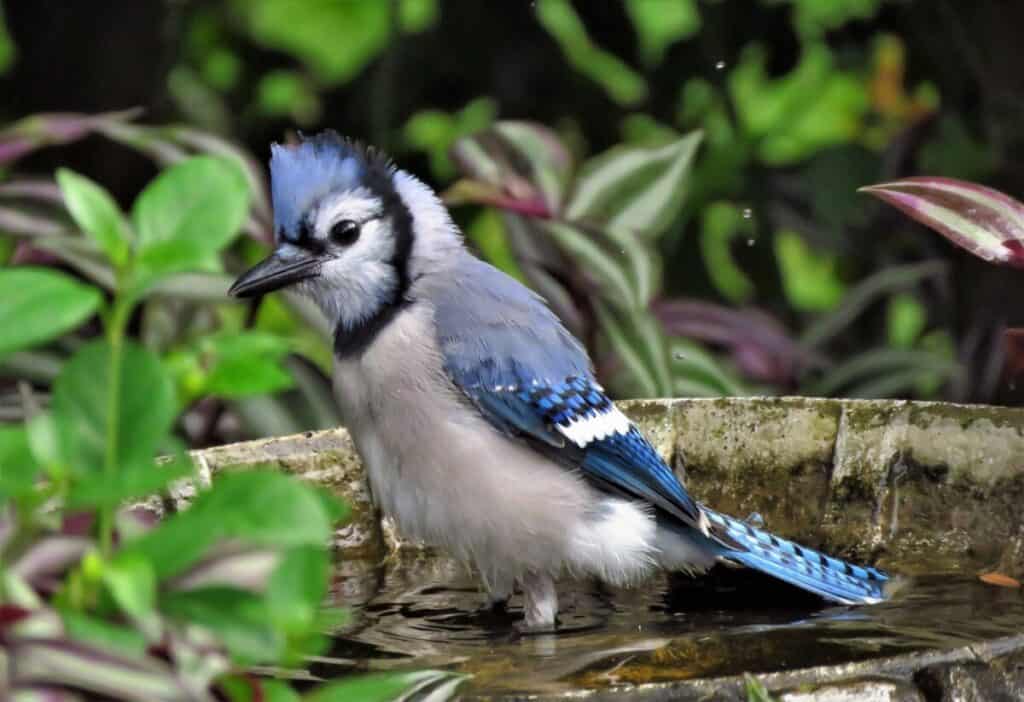
Now that you know the optimal depth for a bird bath, if you have not yet purchased a bird bath, then you would know what to look out for. But if you already have a bird bath that is too deep and you realized that the bird aren’t coming to your bath, then there are other solutions that will not require you to make another purchase.
Here’s what you can do:
1. Places some large pebbles/stones in the bird bath
These large pebbles will allow for our feathered friends to stand on top of them, which will allow them to either drink or make the water level more shallow so that can begin bathing.
The large pebbles will also provide a great platform for birds to drink water from the bath, especially in the cold winter, where they cannot fully submerge their body in cold water. The large pebbles will also provide a visual aid for birds to gauge the water level before entering the bird bath.
2. Add a shallow dish in the center of the bath
If you do not have any large pebbles or rocks in your vicinity, you can consider using a shallow dish to add to the bottom of the bath. Ideally, this should be placed in the center of the bath such that the depth will be shallow enough for all backyard birds, especially the Black-Capped Chickadee which stands at only 4 to 6 inches.
How To Know If Your Bird Bath Is Deep Enough?
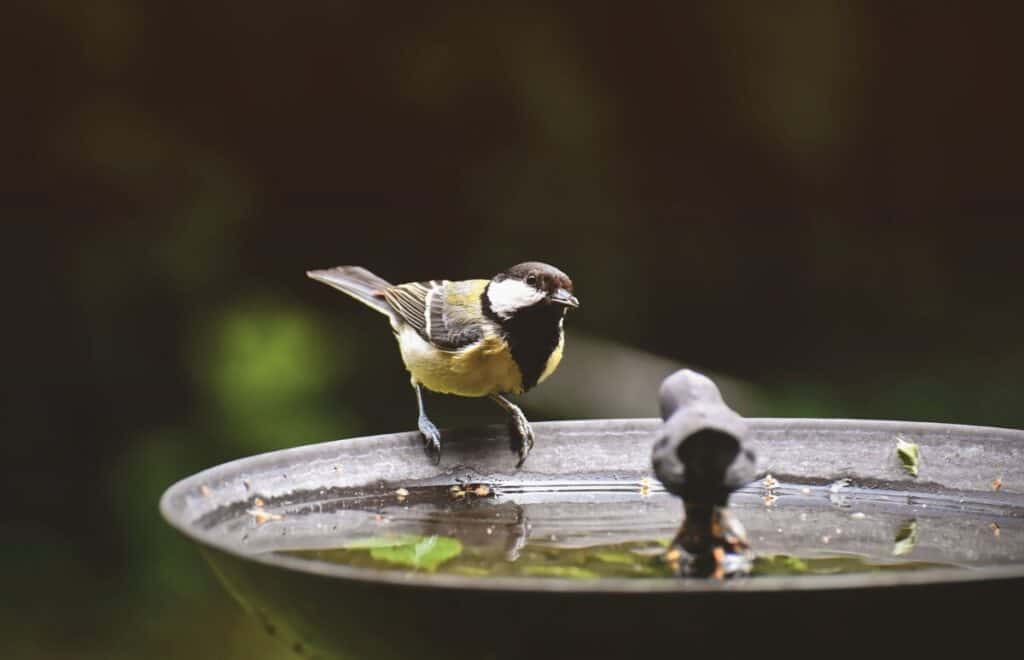
Before you officially set your bird bath out in your backyard, you’ll need to test your bird bath and its depth.
To simulate rainy conditions when the bird bath will be filled to its full capacity, fill your bird bath to the maximum, and measure the depth of the water level. This water level should not exceed 2 inches. You’ll need to pay more attention to this especially if your bird bath does not automatically adjust the water level.
You’ll also want to simulate dry conditions when the water can evaporate relatively quickly. Let’s say you put out some clean water in the bird bath, and the water dries up really quickly. This will cause the water depth to be too shallow for the larger birds to take a bath in, especially birds such as the American Crow or the Blue Jay.
To deal with this, you’ll need to either consider a bird bath with automatic water filling capabilities or monitor the bath on your own and top it up with water daily.
Final Thoughts
The depth of a bird bath can really make or break whether birds will visit your bird bath. If the depth of the bird bath is too shallow, then bigger birds may not find it deep enough to splash around in, but if the depth of the bird bath is too deep, then the smaller birds can possibly slip or drown in the bath.
Therefore, the depth of a bird bath is optimal, right from the very start at 1 to 2 inches deep to prevent such mishaps from happening. Hopefully, you have gained some value from reading this article on bird bath depths, and let’s all improve in our journey of birding together. Thank you so much for reading!
Happy birding!
My Recommended Birding Resources:
Hey there, Justin here!
Here’s a list of all my favorite resources, products, and brands I trust and love.
My Celestron Nature DX 8×42 Binoculars: It’s a great budget pair for beginner birders. Highly valued for its price! Read my review.
Safe Paint for Bird Baths Guide: Learn about non-toxic paint for painting bird baths.
Safe Sealers for Bird Baths Guide: Learn which sealers are safe for bird baths.
Safe Paint for Bird Feeders Guide: Learn what special care needs to be taken to paint bird feeders with the right paint.
Safe Paint for Birdhouses Guide: Learn about non-toxic paint for painting birdhouses. (Not the same as bird baths!)
Bird Identification Apps Guide: 2 of my favorite birding apps are Merlin Bird ID, and eBird Mobile! Merlin is great for tracking and identifying birds, and eBird Mobile is great for tracking the birds sighted when birding.
Check out my resources page for the full list of resources I recommend!

Justin Chia
Justin is the founder and author of Birding Outdoors. He is a Nanyang Technological University (NTU) alumnus with a Bachelor of Biological Sciences and a former data analyst.
Now, Justin runs the Birding Outdoors blog full-time, hoping to share his deep love for birds, birding, and nature with others.
To unwind, Justin enjoys gaming and reading.

